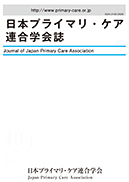Volume 41, Issue 3
Displaying 1-10 of 10 articles from this issue
- |<
- <
- 1
- >
- >|
-
2018Volume 41Issue 3 Pages 83-84
Published: September 20, 2018
Released on J-STAGE: September 26, 2018
Download PDF (165K)
-
2018Volume 41Issue 3 Pages 85-91
Published: September 20, 2018
Released on J-STAGE: September 26, 2018
Download PDF (418K) -
2018Volume 41Issue 3 Pages 92-99
Published: September 20, 2018
Released on J-STAGE: September 26, 2018
Download PDF (715K) -
2018Volume 41Issue 3 Pages 100-109
Published: September 20, 2018
Released on J-STAGE: September 26, 2018
Download PDF (370K) -
2018Volume 41Issue 3 Pages 110-117
Published: September 20, 2018
Released on J-STAGE: September 26, 2018
Download PDF (367K) -
2018Volume 41Issue 3 Pages 118-124
Published: September 20, 2018
Released on J-STAGE: September 26, 2018
Download PDF (421K)
-
2018Volume 41Issue 3 Pages 125-128
Published: September 20, 2018
Released on J-STAGE: September 26, 2018
Download PDF (445K)
-
2018Volume 41Issue 3 Pages 129-132
Published: September 20, 2018
Released on J-STAGE: September 26, 2018
Download PDF (387K) -
2018Volume 41Issue 3 Pages 133-135
Published: September 20, 2018
Released on J-STAGE: September 26, 2018
Download PDF (260K) -
Mobile Stalls Pulled by Family Physicians: A Community-based Salutogenic Project Using Mobile Stalls2018Volume 41Issue 3 Pages 136-139
Published: September 20, 2018
Released on J-STAGE: September 26, 2018
Download PDF (590K)
- |<
- <
- 1
- >
- >|
